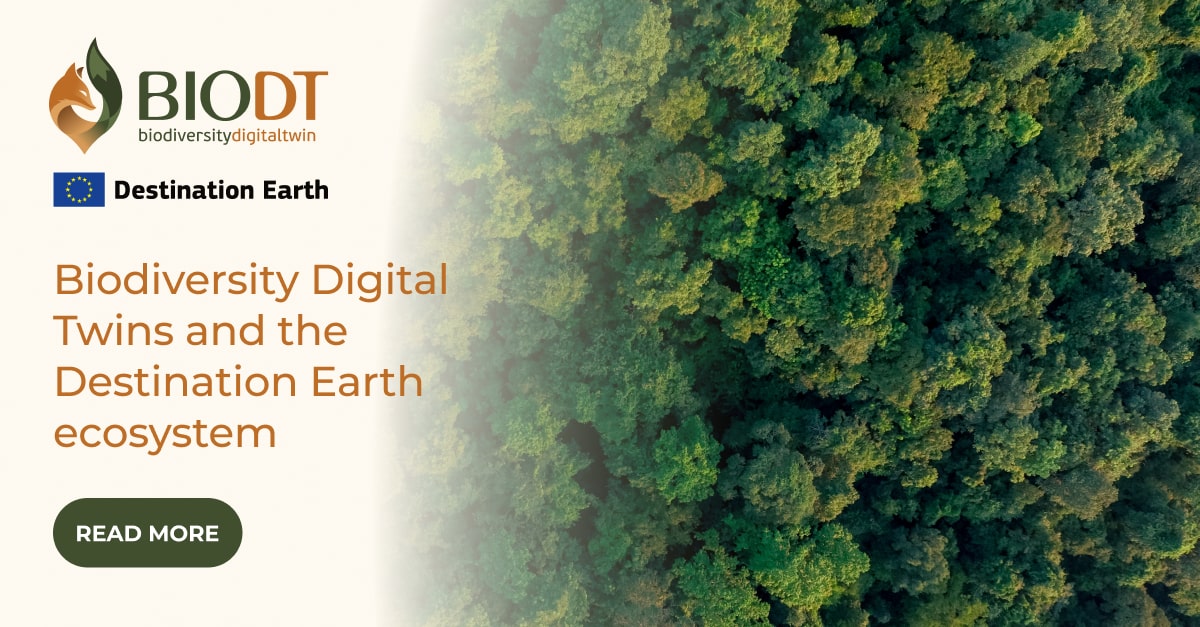
On 3 April 2025, the final event of the BioDT project, “Biodiversity Digital Twins and the Destination Earth Ecosystem”, took place in Rome and online. The event gathered researchers, policymakers, infrastructure providers, and stakeholders from across Europe to discuss how biodiversity digital twins (pDTs) are supporting Europe's digital and green transitions and how they can be further integrated into the Destination Earth (DestinE) ecosystem.
A Vision for Biodiversity in the Digital Twin Era
The event opened with a strategic outlook on how BioDT contributes to EU priorities in biodiversity monitoring, modelling, and digital innovation. Discussions highlighted the project’s contribution to the development of data-driven, high-performance computing tools to better track biodiversity trends, inform policymaking, and support environmental resilience.
Speakers from European institutions and research organisations underlined the need for robust and interoperable digital infrastructures that align with initiatives like DestinE, and stressed the importance of ensuring long-term sustainability of these tools beyond the project’s lifetime.
From Prototypes to Policy: scientific achievements of BioDT
Throughout the event, participants had the chance to explore BioDT’s prototype Digital Twins, which address a variety of real-world biodiversity challenges. These included:
- Predicting species responses to environmental and land-use change;
- Monitoring the spread and impact of invasive species;
- Improving biodiversity mapping through genetic data and barcode-based identification;
- Modelling interactions between species and human activities.
Each presentation provided concrete examples of how pDTs can support nature conservation, enhance ecological forecasting, and deliver insights for better policy development.
Challenges and Opportunities in Infrastructure and Data Management
Two panel discussions focused on how to ensure the interoperability, sustainability, and scalability of biodiversity digital twins within larger digital ecosystems like DestinE.
Key messages included:
- Sustainability requires a holistic approach, involving infrastructure, software, and skilled human resources.
- As digital twins grow in complexity, so does the need for improved data storage, integration, and user interfaces.
- Promoting interoperability across infrastructures is essential to boost efficiency and reusability.
Greater investment in data stewardship and FAIR data principles is needed to make data findable, accessible, and reusable. - AI-based tools for improving metadata and automating stewardship are promising but still require strong human oversight.
There was also a shared interest in encouraging more biodiversity-focused projects to engage with the DestinE ecosystem and the Green Deal Data Space, as part of a broader effort to strengthen Europe’s digital and environmental data landscape.
What Comes Next?
The BioDT prototype Digital Twins will be integrated into DestinE to enhance its monitoring and predictive modelling capabilities, while fostering stronger collaboration between digital twin initiatives, research infrastructures, and policy frameworks.
As Europe accelerates its digital and green transitions, DestinE’s mission to build a comprehensive, interoperable digital ecosystem to simulate and predict Earth system processes gains ever-increasing importance. BioDT’s collaboration with DestinE is a step forward in aligning biodiversity-focused digital twins with the broader efforts to model the planet at unprecedented scale and precision. By integrating BioDT’s prototype tools into the DestinE Data Lake and leveraging its high-performance computing infrastructure, the project will leave its legacy in the hands of the initiative that is best suited to continue its work.
This convergence highlights the role of biodiversity as a critical layer within the digital twin ecosystem — essential not only for environmental monitoring, but also for informing sustainable development and resilience planning across sectors. Looking ahead, continued collaboration between projects like BioDT and initiatives like DestinE will be key to advancing Europe's leadership in digital environmental intelligence and ensuring that biodiversity remains at the heart of climate and policy solutions.